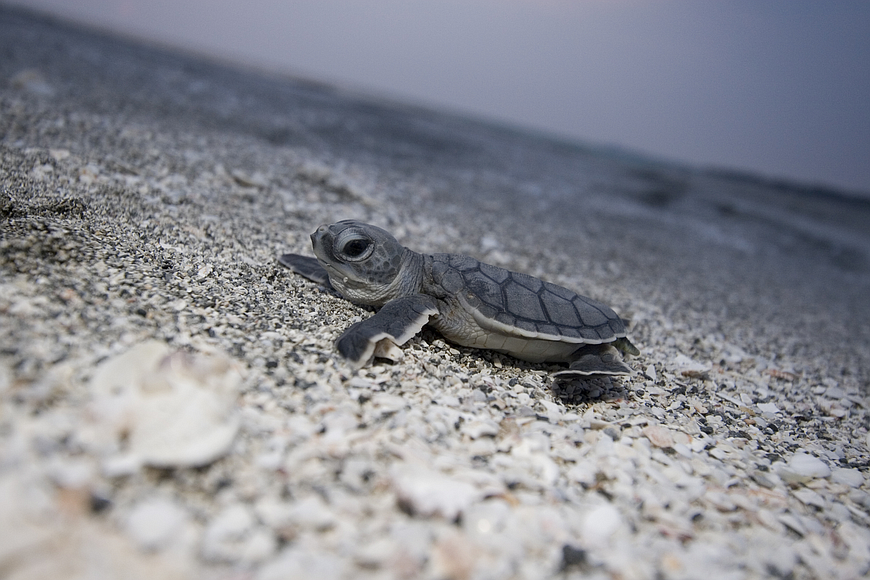- November 15, 2024
-
-
Loading

Loading

As biologist Rick Herren discussed sea turtle nesting season, he recalled a moment during graduate school when he and his friend were watching a sea turtle as it was nesting. His friend wanted to take a photo.
“I told him not to,” Herren said. “And he did anyway.”
The flash from the camera caused the turtle to remain completely still for 45 minutes.
Herren used the incident, which he said his friend felt horrible about, as a cautionary tale to convey how disorienting light can be to sea turtles.
Herren was addressing the 30 or so people who attended Longboat Key’s turtle-nesting season lighting workshop on April 5. The biologist, a member of the nonprofit Sea Turtle Conservancy, has been studying sea turtles in the field for about 25 years.
Sea turtle nesting season begins on May 1 and ends Oct. 31.
This season is the first since the town passed revised rules on sea turtle nesting and shoreline lighting.
The new ordinance eliminated a requirement that limited code enforcement to searching for violations on moonlit nights. It also increases the types of lighting the town can enforce from nine to 13 varieties, including interior lighting. The ordinance also makes it a violation to leave furniture and recreational items close to the shoreline from 11 p.m. to 5 a.m.
Code Enforcement Officer Chris Elbon has also stressed that, to be compliant, light bulbs must be certified by the Florida Fish and Wildlife Conservation Commission.
Herren explained that, when newborn sea turtles hatch, they are guided into the Gulf by moonlight reflecting off the water. Other light sources can disorient the turtles, causing the hatchlings to move away from the water. He relayed to the audience a general rule to follow.
“If you can see a light while standing on the nesting beach, then it’s probably a problem for sea turtles,” Herren said.
The biologist said a common misconception about turtle-friendly lighting is that it’s less safe than bright lights.
To make his point, Herren showed the audience a photo of a gated area, lit by an unshielded white light. He then showed a photo of the same area lit by a turtle-friendly light, and a person became visible behind the gate.
Before Herren’s presentation, Assistant Town Manager Mike Hein said the town was hosting the workshop to educate residents about sea turtle nesting before the season begins. He noted that there were “a record number” of disorientations last year.
Hein mentioned that the town’s beach nourishment program has been completed, and helping sea turtles adjust is a priority.
“We have a vested interest in making sure that the turtles survive and thrive in this wonderful new environment,” Hein said.
Tips for Turtle Nesting Season:
- The town’s new ordinance allows officers to walk the beach any night, not just moonlit ones. Town officials encourage consistent compliance.
- Furniture on the beach must be removed between 11 p.m. and 5 a.m. Adult sea turtles can become trapped in beach furniture, as well as other recreational equipment.
- An interior light can also disorient sea turtles. If it can be seen from the beach, then the window is required to be covered with shades or tint for 45% view.
- FWC-approved bulbs: If an outdoor light bulb is not certified by the FWC, it does not comply with the Key’s turtle-nesting ordinance. Check out myfwc.com
- Bulbs don't need to be red. It's a common misconception that turtle-friendly light bulbs must be red. Lights are available in more aesthetically appealing shades, such as amber.
Questions: Email [email protected]
2016 turtle nesting data:
LBK-Manatee: 578 nests
LBK-Sarasota: 606 nests
LBK total: 1,184 nests
Areawide : 4,578 nests